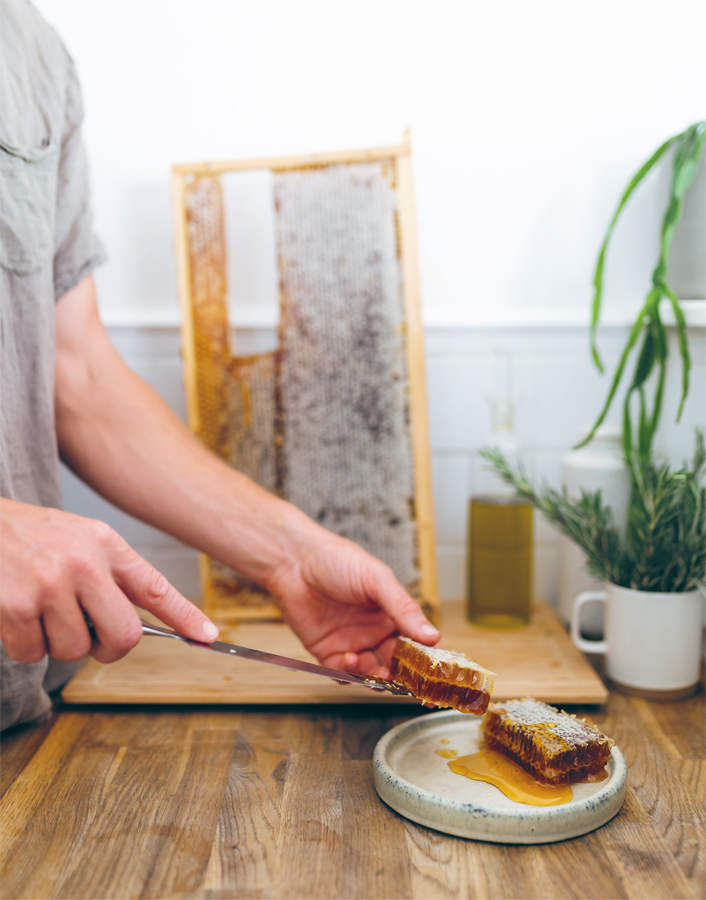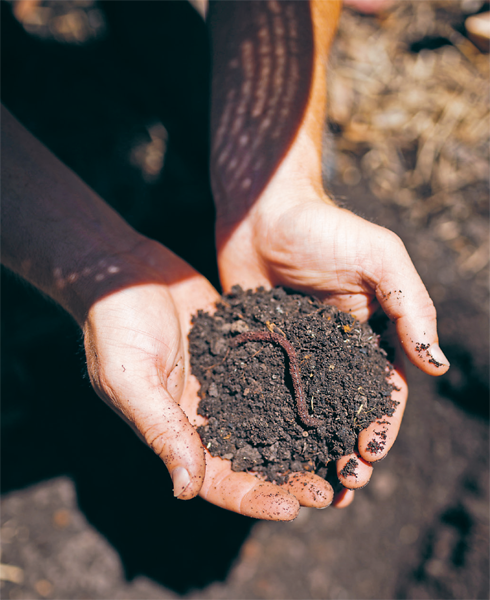
Worms and Compost.
Puppies and other family pets are far more likely to be snuggled and photographed than a slimy worm, so why should you bother keeping a worm farm? Although less cuddly than their canine friends, worms are lovable in their own way. This love usually develops out of an appreciation for the benefits that the worms (and their by-products) provide to your garden. They help to improve and maintain well-structured, rich, organic soil, while reducing your home’s environmental impact by turning kitchen scraps into nutrients that your plants just love to soak up.


WORM FARMS
Whatever brand or shape you choose, a worm farm should allow you to feed kitchen scraps into the top box and remove worm castings and worm water from the bottom box. The look, size and brand are irrelevant if you’ve got this function down pat. Just make sure to keep your worm farm out of the sun and place it where the temperature is more consistent.
Your new worm friends will eat any leftover vegetables and fruits. Cut up larger pieces into bite-size chunks for your mates, as this will help them get through it faster. A worm’s digestive system deodorises kitchen waste and turns it into bacteria-rich castings (humus), which are full of nutrients for your plants. As the castings accumulate, take a few handfuls to spread around new plantings. The neutralised castings have a pH of around 6–7, which is the ideal pH level to allow most plants and edible gardens to access existing soil nutrients.
You can also dilute the castings with water (one part castings to ten parts water) to create ‘liquid gold’. This nutrient-rich liquid can be used on new soils, seedlings or any garden areas in need of soil conditioning.
Diverting kitchen waste from landfill and turning it into premium plant food and quality humus for your garden is a key organic-gardening practice. The truth is, you’ll never be able to buy a product as good as this, and, to be honest, why would you even consider paying for it if you can make it easily at home? If you’re taking the time to grow food, then why not indulge in the process of creating your own fertiliser from waste as part of your home’s closed-loop system? What’s more, I believe gardening and being exposed to good soil bacteria through the handling of humus as well as the harvesting and cooking of our homegrown organic food helps to increase the diversity of our own gut health, contributing to a stronger immune system.
Worm tunnels
Another method of gifting your kitchen waste to these hungry little troopers is to build worm tunnels out of PVC pipe and insert them vertically into garden beds and large pots. This is a great alternative to a worm farm if you are pressed for space. Take a 30-centimetre (12-inch) long pipe and drill numerous worm-sized holes into it, then add a tight-fitting lid. Insert your scraps through the hole in the top, close the lid and the scraps will go directly to the worms below. Put as many tunnels around the garden as you need. You’ll be reducing your would-be landfill waste and improving the quality of your soil and plant health! It’s a win-win situation.
COMPOSTING
The ability to create quality compost comes with practice. Once you have mastered the technique, you will find that your compost is your secret weapon for gardening success. There are many compost recipes online and in books. Every seasoned gardener has their own unique method and love for composting. So, what’s the fuss all about?
Adding compost to your soil helps to create superb structure and increase microbial activity (the compost is food for beneficial invertebrates and bacteria). Just picture a forest floor, deep with leaf litter, good moisture and organisms of all sizes living and dying in a rich, biodiverse ecosystem. This constant natural cycle replenishes the soil and all the plants, animals, fungi and bacteria that thrive off it. Humans are also part of this cycle, so it makes sense for us to be involved in composting.
Now, let’s bring this nutrient cycle to your backyard. You’ll need to consolidate all your organic yard and kitchen waste, and process it in either a worm farm or compost. Before you get going, here are a few things to know about composting:
| – | Choose a compost system that suits your ability and garden size. Some require you to just lift a lid, while others involve harder work but offer fast results. |
| – | Composting using a slow/cold system is when you gradually add waste to a common plastic compost bin and the waste breaks downs gradually. It’s best to have two of these bins going at once, so you can keep the full one closed as the material is breaking down, while adding your ongoing waste to the other. |
| – | Larger compost heaps with a volume greater than 1 cubic metre (35 cubic feet) heat up faster due to the heat given off by bacteria working hard to decompose the material. The pile needs to stay above 50°C (122°F) for a few days. After that, it requires turning every few days, then weekly, until it looks like rich soil from a forest floor. |
| – | Tumbler-style bins are a little faster at composting, as you can easily spin them once a week to aerate the contents and keep the microbes comfortable. As an added bonus, they’re vermin-proof and, as we’ve found out, kelpie-proof! |
| – | Successful composting is about adding a good mix of materials while maintaining a carbon to nitrogen ratio of about 30:1. We don’t want to bore you with a table of the typical carbon and nitrogen content of everyday organic matter, so simply start by thinking of 30:1 as a dry material to wet material ratio. |
| – | Composting works well when the bulk of the contents are just a little moist – similar to a well-drained garden soil. Keep a straw bale, dry leaves or shredded paper handy. If the compost starts to look shiny, feel soggy or smell pungent, add some of the dry material. A mix suffering from these conditions is typically higher in nitrogen than carbon. Fruit and vegie waste, manures and green garden waste all contain more nitrogen than carbon, so they will therefore add more moisture to the mix. |
| – | Composting is like baking a cake, but it’s ready in months not minutes (and you probably aren’t as excited to devour it with some ice-cream!). It will need time for the microorganisms to break down the materials. The length of time will vary, depending on the size and type of your compost system, as well as the materials inside. If you’ve got some space to spare, you can build your own compost piles out of timber sleepers and add all your waste at once. |
| – | Your compost is ready when it has turned a consistent dark brown and none of the original waste material is recognisable. |
Soon enough, upcycling waste into nutrients for the garden will become second nature. You’ll get the hang of the process and find the method that fits best with your gardening style.